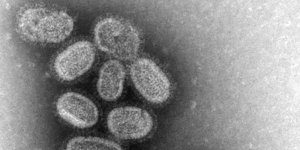| News / Science News |
Rapid-response immune cells are fully prepared before invasion strikes
NIH | MAY 8, 2016
Through the use of powerful genomic techniques, researchers at the National Institute of Arthritis and Musculoskeletal and Skin Diseases (NIAMS) have found that the development of immune cells, called innate lymphoid cells (ILCs), gradually prepares these cells for rapid response to infection.

Rapid-response immune cells are fully prepared before invasion strikes.
Our immune system has two arms — innate and adaptive. ILCs are innate immune cells that respond quickly against pathogens at the first site of invasion. They release small molecules called cytokines that transmit signals to fight infection.
The adaptive immune response kicks in more slowly to build an army of cells that can target specific offending pathogens. T cells, especially helper T cells, are a key part of the adaptive immune system. They produce different cytokines depending upon the type of pathogen they are trying to combat.
ILCs have received less attention despite their critical role in mounting the innate immune response. Recent work has revealed that ILCs and T cells mirror each other in their subclasses, which are defined by the kinds of cytokines they produce. However, the relationships between the two types of cells have been unclear.
the researchers analyzed regions of the genome that control the cytokine genes produced by both ILCs and T cells. They found that each subclass of ILCs is associated with a distinct pattern of accessible regions. These patterns can be viewed as a type of barcode for each subclass. Further experiments showed that ILCs acquire their barcodes in a stepwise manner over the course of cellular development.
Importantly, the analysis showed that the barcodes are in place in ILCs before they encounter infection. This open, accessible configuration surrounding the switches that control cytokine genes may be instrumental in enabling ILCs to rapidly launch an assault upon infection.
In contrast, the researchers found that many of the DNA regions controlling cytokine genes in the mice’s T cells are inaccessible and silenced prior to exposure to a pathogen. But upon infection, T cells adopted barcodes similar to those of their ILC counterparts.
This result reflected earlier findings that ILC and T cell subclasses produce similar sets of cytokines, but also revealed differences in how the two cell types control the activities of these key immune response genes. While the regulatory landscapes of ILCs are primed for a quick defense upon infection, those of T cells are minimally prepared when the pathogen invades. Only following infection are modifications in the landscape made that enable T cells to launch their attack.
YOU MAY ALSO LIKE




